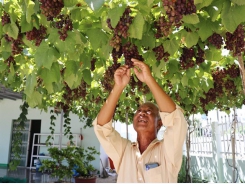Russian demand for imports holds promise for Vietnamese produce

With a large retail market and demand for a diverse range of imported goods, Russia has become a potential market for Vietnamese farm produce, forest products and seafood.
Coffee exports to Russia brewing
Coffee tops imports
In 2019, Russia imported fresh fruits worth more than US$5 billion; processed vegetables, fruits and nuts worth US$1.3-1.5 billion; assorted meat products worth more than US$2 billion; and seafood of all kinds valued at over US$2.4 billion. Vietnam’s share in these imports is small but growing. In the first two months of 2020, Vietnam exported vegetables and fruits worth US$8.2 million to Russia, up 246.1 percent from the same period in 2019. They included processed vegetables and fruits worth US$6.7 million, up 293.5 percent.
Vietnam was Russia’s biggest coffee supplier in 2019, reaching US$154.3 million, down 15.9 percent compared to 2018, and accounted for 31 and 24.5 percent of Russia’s total coffee import value in 2018 and 2019, respectively. Due to the distance between Vietnam and Russia, and complicated payment methods, Vietnamese coffee is facing fierce competition from Brazil, Italy, and Germany. Vietnamese wooden furniture, citrus fruits and coffee have also attracted Russian consumers.
Intensive processing needed
Pham Thi Thu Huong, a representative of Miratorg Group (Russia) said Miratorg is distributing farm produce and seafood through 30,000 supermarkets in Russia, importing coffee beans, pepper, Tra fish and shrimp, with food safety a top priority.
Deputy Minister of Agriculture and Rural Development Phung Duc Tien said Vietnam and Russia are strategic partners, and Russia is a large, potential market. He recommended that Vietnamese enterprises focus on Russia, in addition to other key export markets in the EU, the US, China, and Japan. The ministry told relevant agencies to help exporters satisfy importing countries’ standards and laws, he said.
Vietnam has been exporting farm produce to Russia for decades, but the exports account for only 1.6 percent of the country’s total. Due to high tax rates and long-distance transport costs, the competitiveness of Vietnamese exports is low. Other difficulties they face include tight technical barriers, difficult currency exchange, and Vietnam’s produce processing industry that still lags behind its foreign counterparts.
Economists say farm produce processing development and state-enterprise cooperation in trade promotion and policy making are important measures to increase exports to Russia.
According to the General Department of Vietnam Customs’ statistics, Vietnam exported farm produce, forest products and seafood worth US$68.5 million to Russia in the first two months of 2020, up 0.3 percent from the same period of 2019. Vegetable, fruit, rice and pepper exports increased sharply.
Có thể bạn quan tâm
Phần mềm

Phối trộn thức ăn chăn nuôi

Pha dung dịch thủy canh

Định mức cho tôm ăn

Phối trộn phân bón NPK

Xác định tỷ lệ tôm sống

Chuyển đổi đơn vị phân bón

Xác định công suất sục khí

Chuyển đổi đơn vị tôm

Tính diện tích nhà kính

Tính thể tích ao hồ



 Ben Tre launches first fruit shipment to EU…
Ben Tre launches first fruit shipment to EU…  Ninh Thuận develops superior grape variety, commercial cultivation…
Ninh Thuận develops superior grape variety, commercial cultivation…